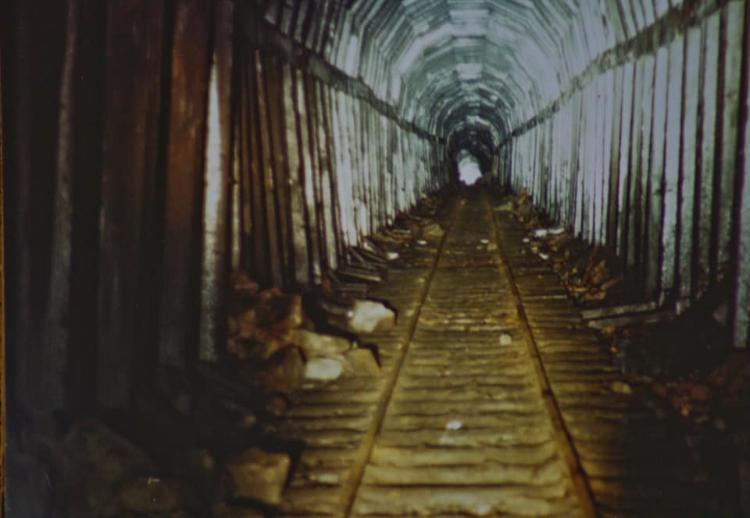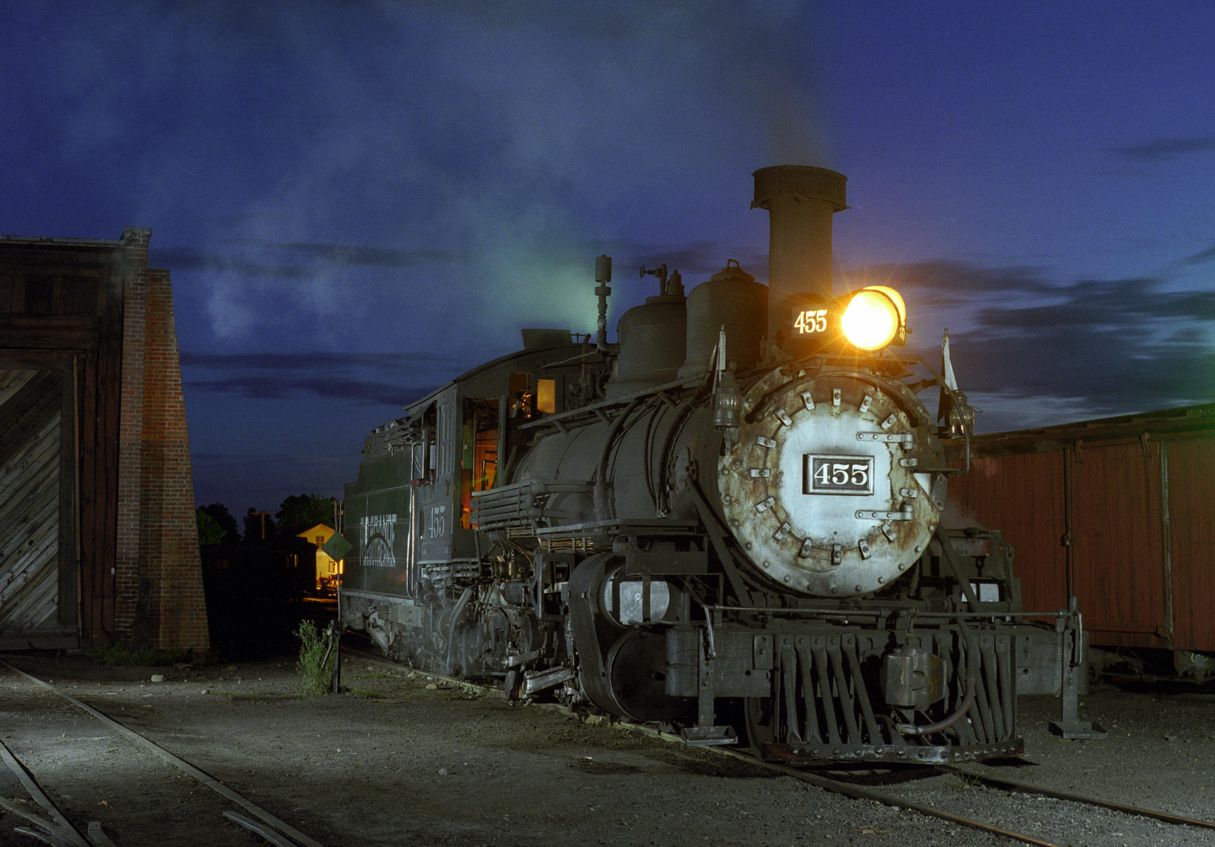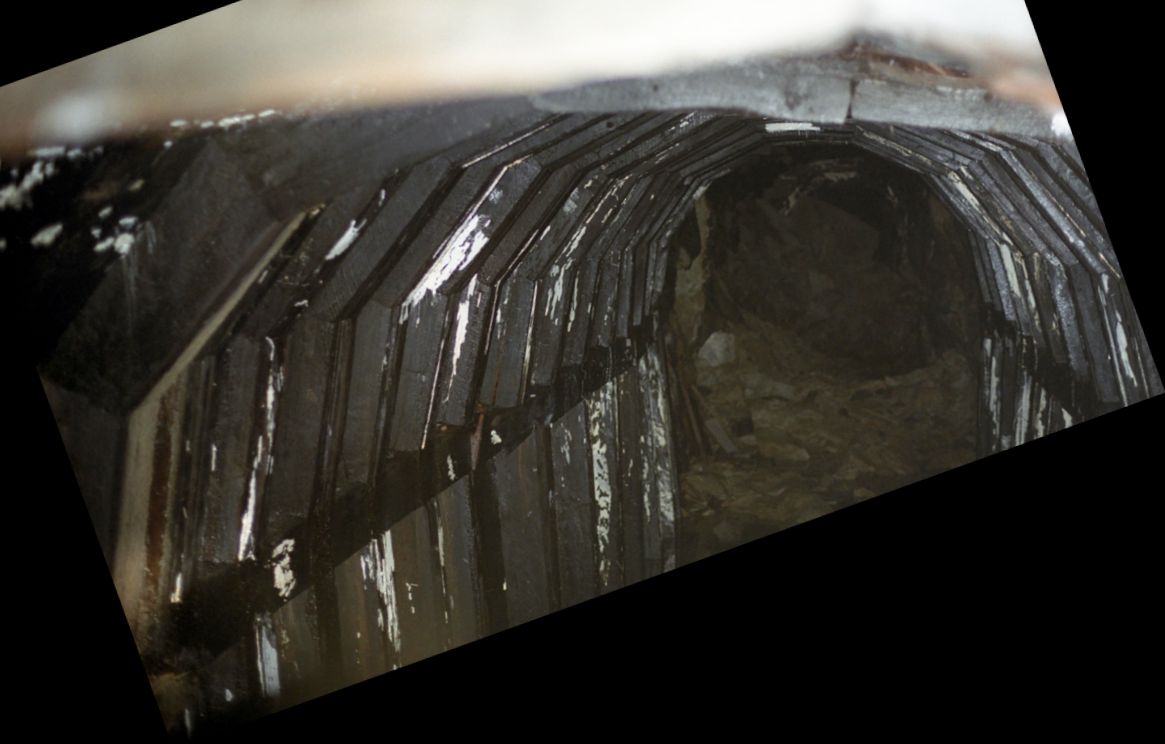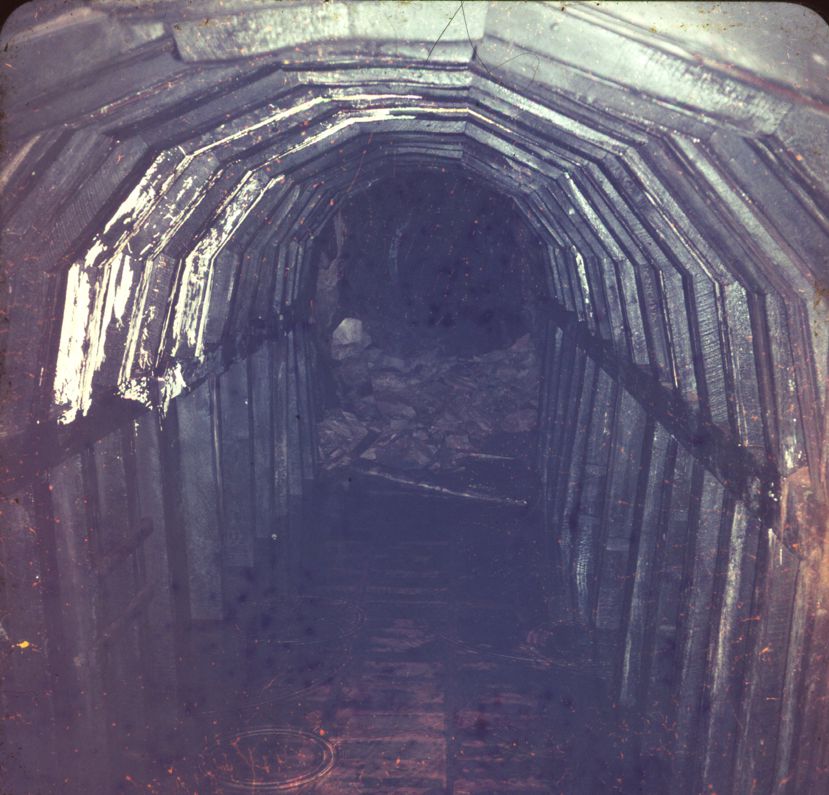Alpine Tunnel interior shot
|
I wish I had a little background on this photo, but I just happened on it somehow on a Facebook page belonging to a Jack Sanderson. It's a stunning shot of the interior of Alpine Tunnel looking toward what appears to be one of the cave-ins with the original South Park rails above water and looking ready to take on an eastbound train of Gunnison coal.

|
|
Great photo! I'm not so sure it shows a cave-in. To get such uniform lighting, the photographer almost certainly walked down the tunnel painting the walls with his strobe. The bright spot at the end is probably from firing the strobe too many times. The dark area before it looks to be an unlined stretch (not the entire tunnel length was timber lined). The timbers in the left foreground are more vertical than the rest, so is it possible that this photo was taken from the snowshed a the west portal before it collapsed? My recollection is that the debris pile inside tunnel near the west portal (the first pile after the portal, not the one that buried the portal) is about that far in, and that it looks more like gradual accumulation from the unlined ceiling than an actual cave-in. I'll try to dig out my photos from the west portal in the '80s or '90s to compare.
|
Re: Alpine Tunnel interior shot
|
Todd, how does one take a photo like this? You mentioned that the photographer had to walk the length of the shot. Is this done with several photos and a long exposure?
|
It's done with the camera on a tripod and the shutter in Bulb, locked open with a cable release. A similar method was used for this photo:  For this shot, there was a photo line where everybody had their cameras set up with shutters open while the organizer walked around firing his strobe. The duration was short enough that the headlight and sky didn't overexpose (or the headlight may have been turned off part-way through - this was over 20 years ago so I don't recall all of the details). One strobe flash was head on (from behind and above the photo line) illuminating the smokebox front and casting the number plate shadow on the smokebox front and step bracket shadows on the valve head covers. Subsequent strobe flashes were from the side. This provided fairly uniform illumination. With just one flash, the brightness would fall off significantly for parts farther away from the light source. One trick is keeping the person holding the flash out of the photo so you don't see his shadow or silhouette. There is a good photo in Helmer's Alpine Tunnel book that was taken this way, but that one has some traces of the person's shadow. I took this shot in 2000, shortly before I switched to digital cameras. This was during a Passport in Time work session when we were allowed to remove the rock that blocked the hole at the keystone at the west portal. I held the camera with a flash into the hole and shot blindly. You can see how the nearest arch is washed out, and they quickly get darker. I was actually in the tunnel in 1992 when the hole was a little bigger and the rock hadn't been in place (plus there was no USFS presence yet), but I didn't have a strobe with me. We had some good flashlights, but while it was enough to see around, the few photos I tried didn't show anything.  This one comes from a medium-format slide, dated April 1957, which also appears to have been taken just inside the west portal. Between my photo and this one, it looks like the distance to the un-lined area is much less than in the photo you just posted, but it's hard to be certain since neither of these photos shows the beginning of the tunnel. Again, you can see the light fall off farther into the tunnel. 
|
Re: Alpine Tunnel interior shot
|
Thanks for explaining that, Todd. I had no idea how detailed it was to get photos like that. Thanks for sharing those other tunnel photos too.
Looking back at the original photo I posted, I was intrigued by your thought that the straight beams might be the snowshed outside the west portal. Is there any other option? Were there any other beams in the tunnel that would be straight vs. at an angle? |
«
Return to C&Sng Discussion Forum
|
1 view|%1 views
| Free forum by Nabble | Edit this page |

